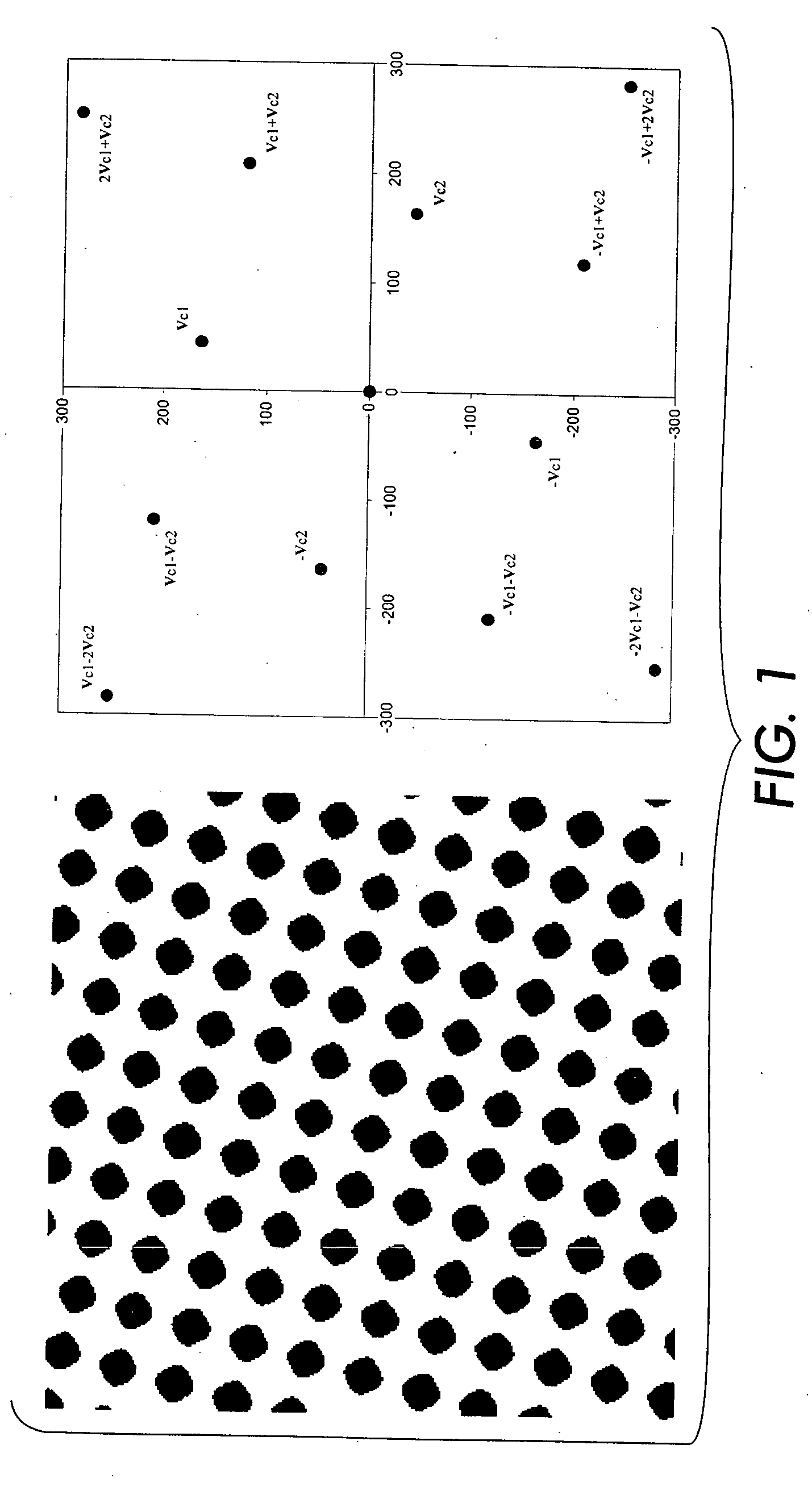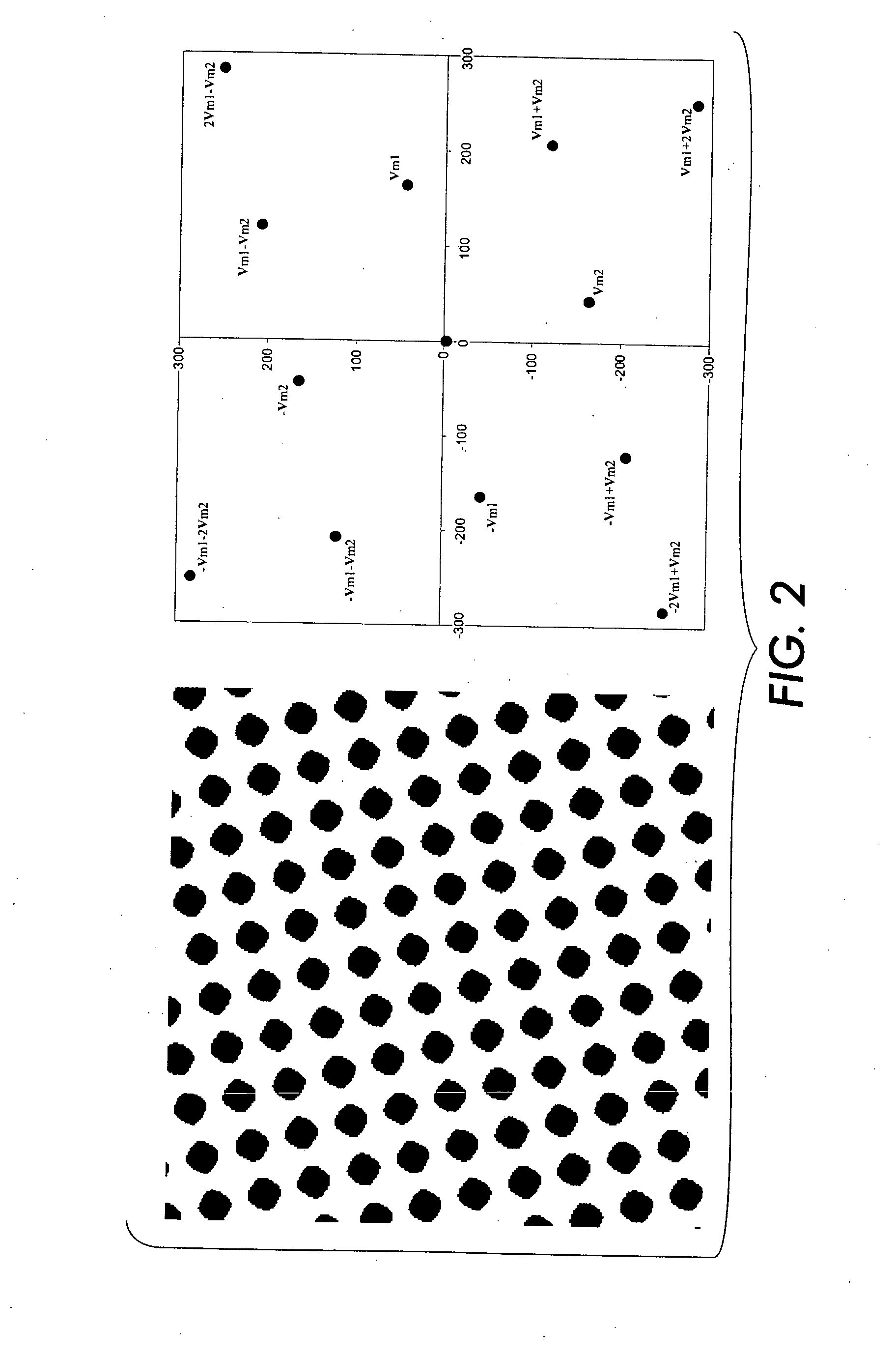Moire-free color halftone configuration employing common frequency vectors
a frequency vector and color halftone technology, applied in the field of memory-free color halftone printing, can solve the problems of significant color shift, undesirable interference patterns of moiré patterns, and digital color halftone printing
- Summary
- Abstract
- Description
- Claims
- Application Information
AI Technical Summary
Benefits of technology
Problems solved by technology
Method used
Image
Examples
Embodiment Construction
[0034]The teachings disclosed herein provide a color halftone configuration that produces consistent rosettes free of moiré when printing 2, 3 or 4 color halftone separations. With the non-orthogonal halftone screen technology thus developed it is possible to design four clustered-dot halftone screens to generate halftone outputs with rosettes appearing as ordered hexagons of identical shape. The hexagon rosettes have three fundamental spatial frequencies exactly equal to half of fundamental frequencies of the three halftone screens. As a result, the halftone outputs are truly moiré-free, because there is no frequency component, fundamental or high-order harmonic, in single color or color combination, that is lower in frequency than the fundamental frequencies of the hexagon rosettes. The requirements for achieving these exemplary hexagon rosettes are specified by several frequency-vector equations, in combination with conventional requirements for multi-color moiré-free halftoning....
PUM
 Login to View More
Login to View More Abstract
Description
Claims
Application Information
 Login to View More
Login to View More - R&D
- Intellectual Property
- Life Sciences
- Materials
- Tech Scout
- Unparalleled Data Quality
- Higher Quality Content
- 60% Fewer Hallucinations
Browse by: Latest US Patents, China's latest patents, Technical Efficacy Thesaurus, Application Domain, Technology Topic, Popular Technical Reports.
© 2025 PatSnap. All rights reserved.Legal|Privacy policy|Modern Slavery Act Transparency Statement|Sitemap|About US| Contact US: help@patsnap.com



